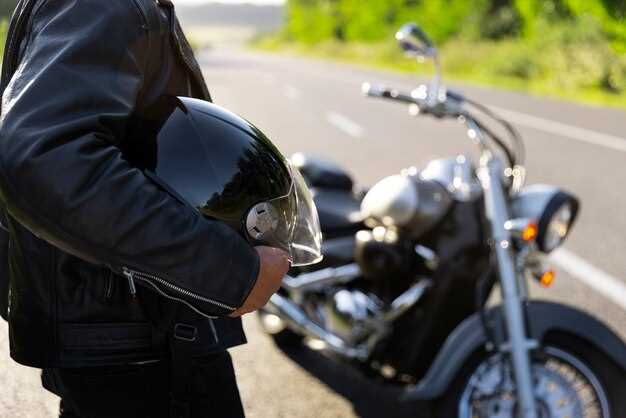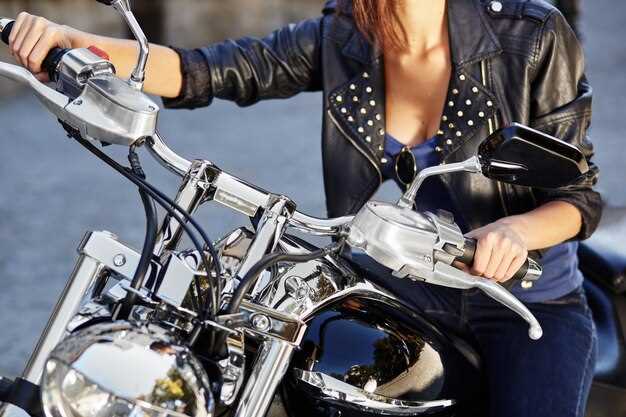
When it comes to long-distance travel and leisurely rides, two motorcycle categories often come to the forefront: cruisers and touring motorcycles. Each type boasts unique characteristics tailored to different riding styles and preferences. Understanding the strengths and weaknesses of both categories is essential for riders seeking the perfect blend of comfort, performance, and aesthetics.
Cruiser motorcycles are known for their low seat height, relaxed riding position, and classic styling, making them a popular choice for riders who enjoy a laid-back experience on the road. With a focus on style and urban maneuverability, cruisers excel in providing a comfortable environment for short to medium rides. However, they can fall short in long-distance capabilities and storage options compared to their touring counterparts.
On the other hand, touring motorcycles are designed specifically for long journeys, often featuring advanced technology, larger fuel tanks, and extensive storage solutions. Their ergonomic design emphasizes rider comfort over extended periods, making them ideal for ambitious road trips. Yet, the size and weight of touring bikes can make them less appealing for urban commuting or tight maneuvering.
Comfort and Ergonomics: What to Expect from Cruiser and Touring Bikes

When choosing between cruiser and touring motorcycles, comfort and ergonomics play a vital role in the riding experience. Both types of bikes cater to different preferences and riding styles, impacting how a rider feels on long journeys or casual rides.
Cruiser Motorcycles
Cruisers are designed with a focus on relaxed and laid-back riding. Here are the main aspects of comfort and ergonomics that define cruiser motorcycles:
- Seat Height: Cruisers generally have a lower seat height, allowing riders to place their feet flat on the ground, enhancing stability when stopping.
- Riding Position: The typical cruiser layout features forward-set footpegs and wide handlebars, promoting a relaxed riding posture that minimizes strain on the back and arms.
- Seat Design: Often, cruiser seats are wide and cushioned for comfort during long rides, providing support for the lower back.
- Suspension: The suspension systems on cruisers are usually tuned for a softer ride, absorbing bumps and enhancing comfort over uneven terrains.
Touring Motorcycles
Touring bikes are engineered for long-distance travel, prioritizing rider and passenger comfort for extended periods. Key features include:
- Advanced Seating: Touring bikes often come equipped with large, plush seats with additional cushioning for riders and passengers, ensuring comfort over many miles.
- Ergonomic Controls: Many touring models feature adjustable handlebars and footpeg positions, allowing riders to customize their setup for optimal comfort during long rides.
- Wind Protection: These motorcycles are typically fitted with large windshields and fairings, reducing wind resistance and fatigue on the highway.
- Storage Solutions: Ample storage options reduce the need for bulky items strapped to the bike, creating a more streamlined and comfortable ride.
Conclusion

Both cruiser and touring motorcycles offer distinctive approaches to comfort and ergonomics. Cruisers favor a laid-back riding experience suitable for short trips and casual rides, while touring bikes focus on long-distance travel comfort and advanced features. Selecting the right type ultimately depends on personal preferences and intended use.
Performance and Handling: How Do Cruisers and Tourers Compare on the Road?
When it comes to motorcycles, performance and handling are critical factors that can greatly influence a rider’s experience. Cruisers and touring motorcycles serve different purposes, and their design reflects this, leading to distinct performance characteristics on the road.
Cruisers are often characterized by their low seat height, relaxed riding position, and powerful torque. These features enable comfortable rides over short to medium distances. However, due to their heavier frame and broader handlebars, cruisers may feel less agile in tight corners compared to sportier bikes. Their engine tuning focuses on low-end torque, which provides strong acceleration from low speeds, perfectly suited for leisurely rides around town.
In contrast, touring motorcycles are engineered for long-distance travel, offering enhanced comfort and wind protection. These bikes typically feature larger engines designed for sustained high speeds, making them ideal for highway cruising. The handling of touring bikes is optimized for stability, especially when carrying weight. Their design often includes advanced suspension systems to absorb road imperfections effectively, which enhances rider comfort over long distances.
While cruisers excel at providing a laid-back riding style, touring bikes deliver a more dynamic performance over longer hauls. Riders of touring motorcycles may find them more responsive in highway situations, thanks to their ability to maintain consistent speed and stability, even when fully loaded with gear.
Ultimately, choosing between cruisers and touring motorcycles boils down to individual riding preferences. For those seeking a relaxed, easy-going ride, cruisers are often the better choice. Conversely, riders who prioritize long-range comfort and performance will likely favor touring motorcycles, particularly for extended adventures.
Cost of Ownership: Evaluating Long-term Financial Implications for Each Type
When assessing the cost of ownership for cruiser and touring motorcycles, it is essential to examine multiple financial aspects, including initial purchase price, maintenance, insurance, fuel efficiency, and resale value.
The initial purchase price of a touring motorcycle is often higher than that of a cruiser. This difference is primarily due to the advanced technology and additional features found in touring bikes, such as integrated navigation systems, larger fuel tanks, and enhanced comfort accessories. While the upfront investment may be significant, touring motorcycles may offer long-term savings in terms of durability and lower frequency of repairs, given their focus on long-distance travel.
Maintenance costs should also be considered. Cruisers typically require less frequent maintenance than touring models, as they often have simpler engines and fewer electronic components. However, the complexity of a touring motorcycle can sometimes result in higher repair costs when issues arise. Additionally, the specialized components used in touring bikes may lead to increased expenses for routine servicing.
Insurance premiums can vary significantly between the two categories. Touring motorcycles, with their higher value and more advanced features, usually come with higher insurance rates. On the other hand, cruiser insurance is generally less expensive, making them a more budget-friendly option in this regard. Riders should shop around for quotes to ensure they find the best deal based on their specific model and riding history.
Fuel efficiency plays a crucial role in the long-term financial implications of ownership. While larger touring motorcycles have bigger engines and may consume more fuel, many models have been designed for efficiency, especially on long highway rides. In contrast, cruisers, with their typically smaller engines, might offer better fuel economy in urban environments but may not be as efficient on long journeys. The difference in fuel costs can add up over time, depending on the rider’s typical usage patterns.
Finally, resale value should be analyzed. Touring motorcycles often retain their value well due to their popularity among long-distance riders, but factors such as mileage and condition can heavily influence resale prices. Cruisers may depreciate faster, especially if they are not frequently used or well-maintained. Understanding the market demand for each type can provide insights into potential long-term financial outcomes.
In summary, evaluating the cost of ownership for cruiser versus touring motorcycles involves a multifaceted approach. While touring bikes may demand higher initial investments, their potential durability and resale value could make them a wiser long-term financial choice for many riders, especially those who prioritize long-distance travel. Conversely, cruisers may offer lower initial costs and maintenance expenses, appealing to those with tighter budgets or urban riding habits.
